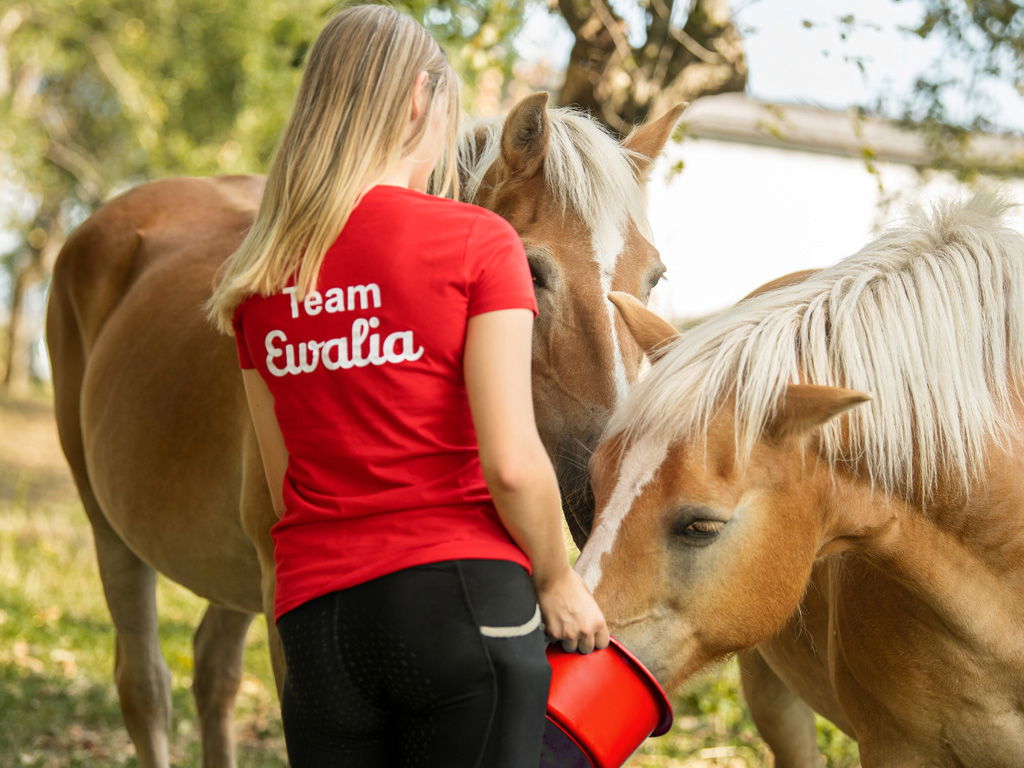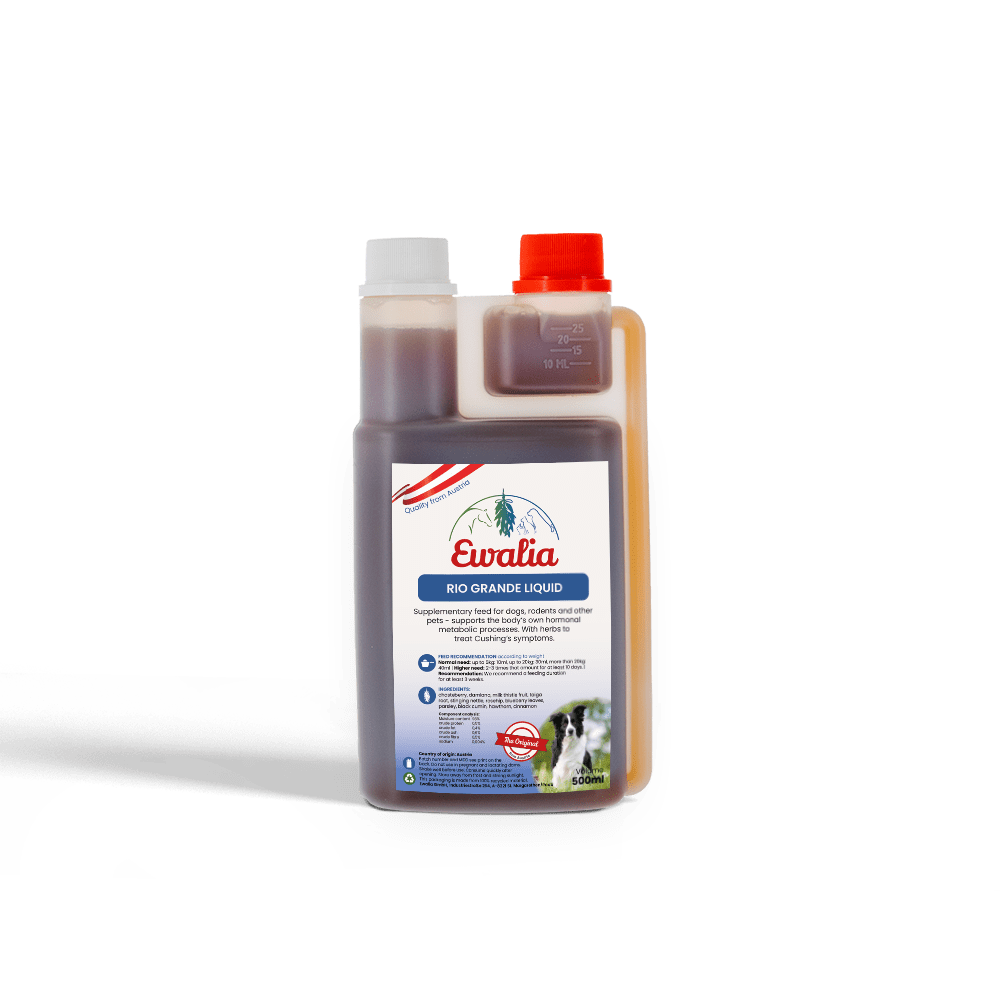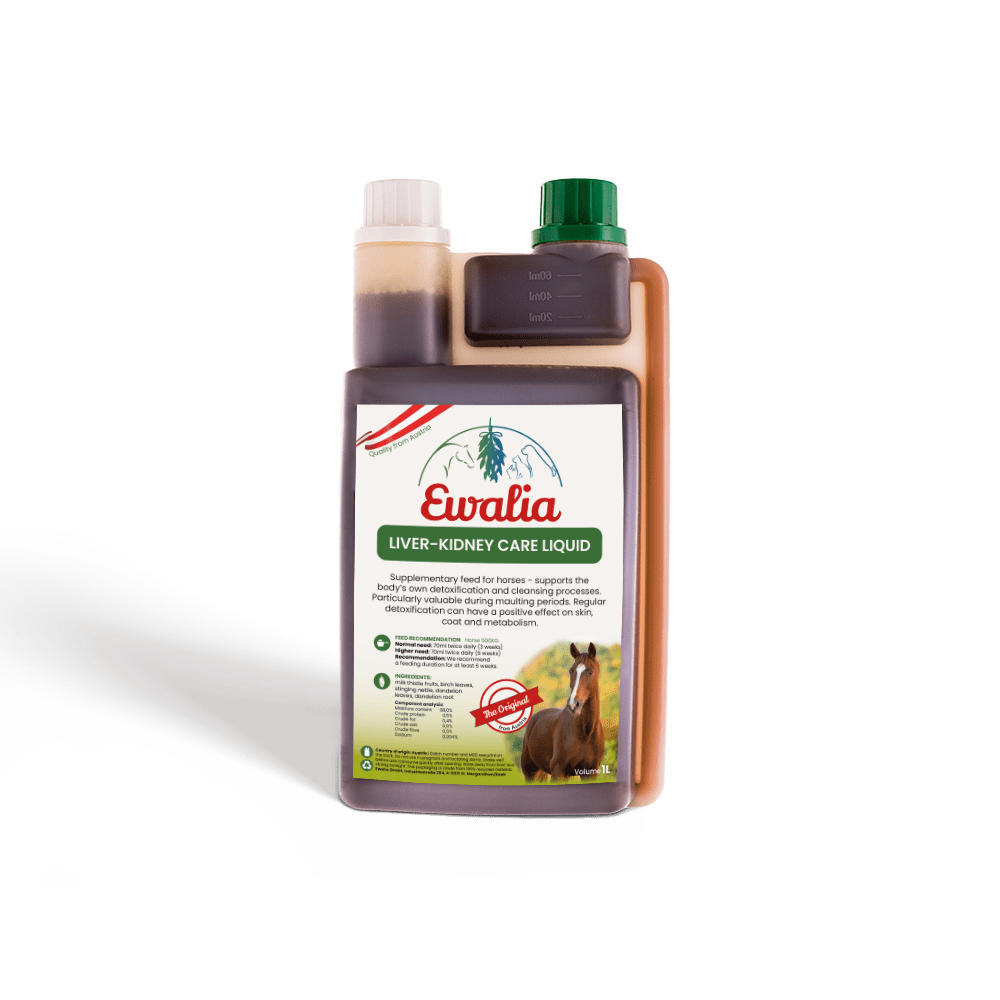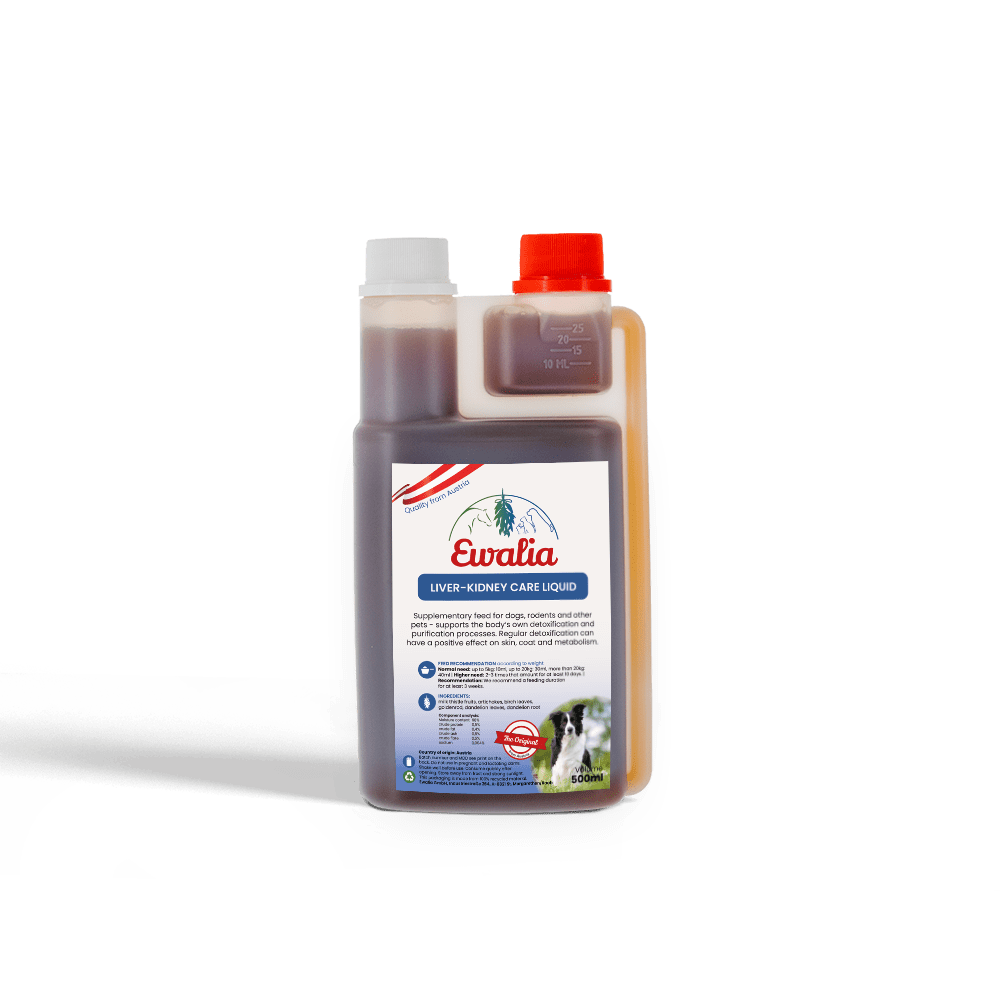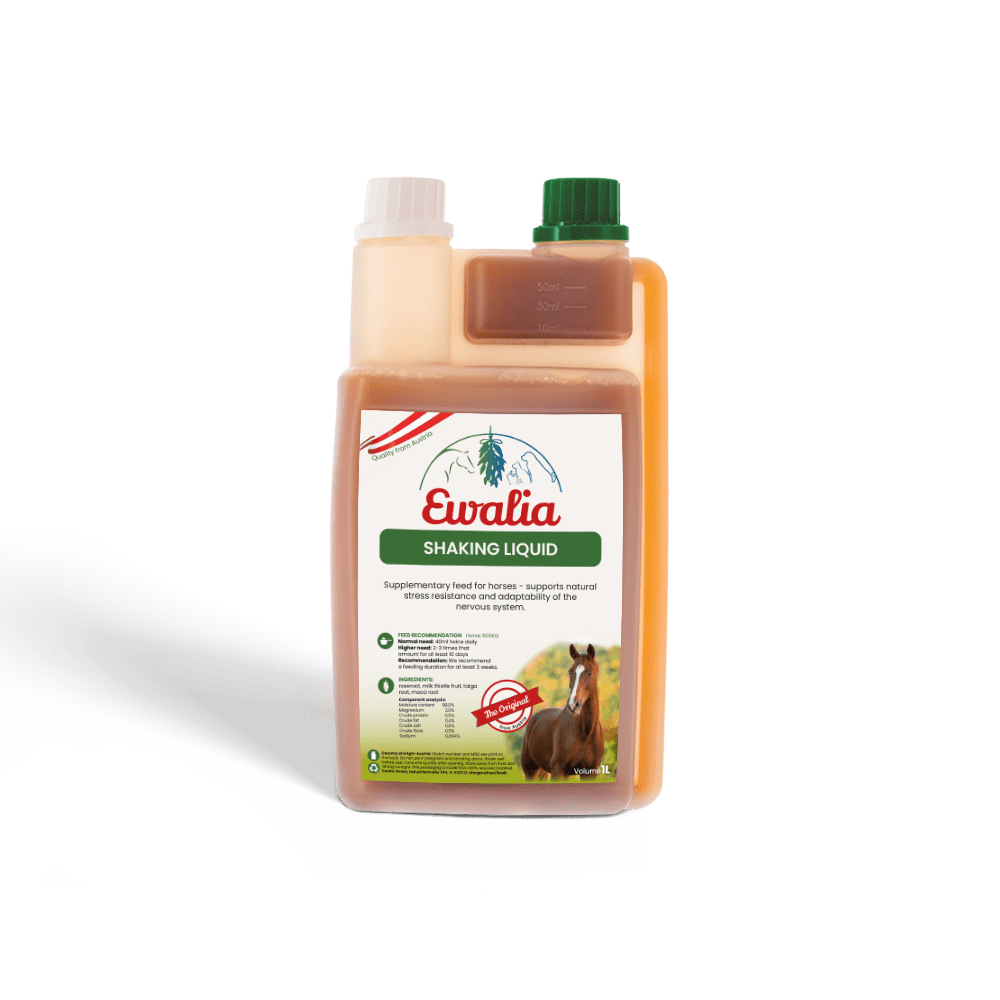Milk thistle
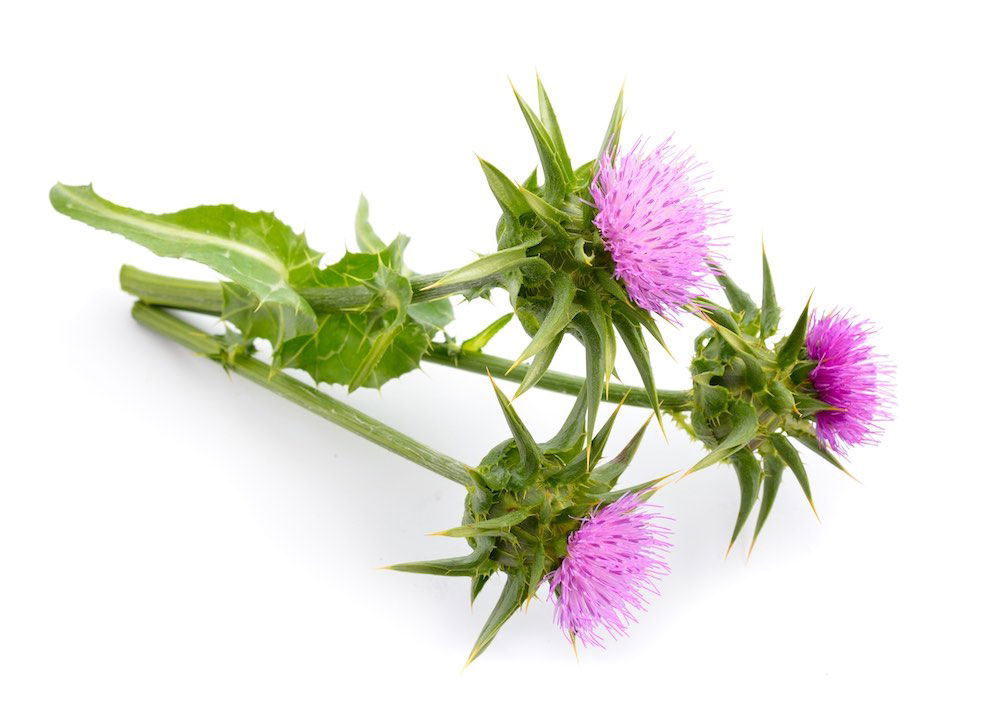
Silybum marianum, aka milk thistle, is also called cardus marianus, blessed milkthistle, Marian thistle, and Saint Mary's thistle. Silybum refers to the shape of its flower, whilst marianum refers to the Virgin Mary. This name harks back to Christian legend. It is said that Mary, on the way to Egypt, rested among thistles to nurse the infant Jesus. A few drops of her milk fell onto the thistle's leaves, and since then the leaves of only this type of thistle display prominent white marbling. Hence the many names for this plant which refer to Mary or milk. The medicinal properties of milk thistle have been known since ancient times. The Herbal Medicinal Products Platform Austria (HMPPA) has named Silybum marianum Austria's Medicinal Plant of 2021.
Where does milk thistle come from, and what does it look like?
Milk thistle is native to Western Asia, North Africa and Southern Europe. It thrives in warm, sunny, dry locations. In Central Europe it can be found growing wild in places. It often can be found growing in ruderal areas such as rubble heaps, along paths, or in livestock pastures. When collecting wild specimens, one should bear in mind that milk thistle is listed as an endangered plant in parts of Austria and Switzerland. Milk thistle is grown extensively as a medicinal plant in Austria, Hungary, and Germany. It is also grown in South America, particularly in Argentina and Venezuela, as well as in China. A plant can reach a height of 150 cm in one or two years. In its first year its leaves form a rosette which, depending on the location, may grow to a diameter of one metre or more. Its basal leaves grow to between 20 and 50 cm in length. They are elliptical, pinnately lobed, petiolate with a shiny surface, and have a distinct green colour with white marbling. The leaf edges have thorns that are up to 8 mm long.
In their second year the plant forms a hairless, erect, branched stem. Small leaves with thorny ends grow from all sides of this stem. During its flowering period from June to September, milk thistle forms purple flowers which look a bit like tassels, thus their botanical classification "Silybum". The blossoms are 4 to 5 cm in size and are protected by a circle of spiny leaves. The unopened flower buds can be cooked and eaten, similar to artichokes; milk thistle was once enjoyed as a winter vegetable as well as a metabolism-stimulating spring tonic. The corolla's purple, tubular flowers are pollinated primarily by honey bees, bumblebees, and butterflies. The blossoms form achenes of 4 to 8 cm; these are useful for human and veterinary medicine, and mature starting in August. The mature plants are first swathed, i.e., cut and laid out in rows. The fruits are then harvested with a combine harvester and cleaned.
How is milk thistle used?
Milk thistle fruits are recognised as a traditional herbal medicine. The Herbal Medicinal Product Committee (HMPC) recommends that they be taken internally to treat digestive symptoms such as bloating and flatulence as well as to support liver function. ESCOP (the European Scientific Cooperative on Phytotherapy) recommends the use of milk thistle fruits to treat toxic liver injuries and as a supportive therapy for chronic inflammatory liver diseases and liver cirrhosis. The Commission E, Germany's scientific advisory board, also rates the use of milk thistle fruits positively. The use of milk thistle herb, however, was given a negative evaluation, as no actual medicinal effect could be proven. Practitioners of folk medicine nevertheless make use of the herbage as well as the fruits.
In ancient Greece, the physician and philosopher Dioscorides was aware of milk thistle's benefits, including as a remedy for snakebite, as a choleretic, and as an emetic. In the Middle Ages, the renowned abbess Hildegard von Bingen wrote about "Vehedistel" as a remedy for side stitches, and Paracelsus recommended milk thistle to treat "internal stabbing pains". Today it is assumed that these referred to pleurisy. In the "Gart der Gesundheit", one of the first herbals to be printed in German, milk thistle root is mentioned as a remedy against poisoning. This thick taproot was also used as a diuretic and an emetic. The healing effects of the plant's fruits, however, are found somewhat later, for example in the writings of the renowned physician Johann Gottfried Rademacher (1772–1850). "Rademacher's Tincture" was used to treat chronic liver and spleen ailments, hepatitis, icterus, and biliary colic. Today, many scientific studies have proven and confirmed milk thistle's hepatoprotective and anti-proliferative effects. It is also said to have antioxidant, antifibrotic, bile stimulating, and anti-inflammatory properties. Milk thistle preparations have even been used successfully as antidotes for poisoning from ingesting the deadly "fool's mushroom". In recent years, milk thistle's the primary substance has been researched as a new, non-invasive treatment for Cushing's disease.
Side effects from the use of milk thistle are rare. Patients with sensitivities may experience a slight laxative effect from milk thistle preparations. Hypersensitivity reactions have also been occasionally observed. Patients with Asteraceae allergies should avoid milk thistle. It is also not recommended to treat children, or pregnant or nursing women, due to a current lack of sufficient data. The administration of milk thistle has been shown to be unproblematic in toxicological examinations on animals, even at higher doses.
What are the active substances in milk thistle?
Milk thistle contains an important complex of active substances called silymarin, a mix of flavonolignans that is mainly responsible for the plant's liver-protecting and detoxifying effects. The primary active substance, silibinin, and its isomers have special hepatoprotective and antiproliferative effects. These help to stabilise the liver cell membranes and accelerate liver cell regeneration. Silibinin also acts as a radical scavenger and shows antioxidant activity. The antiproliferative and chemopreventive effects of silibinin are also currently being studied extensively in cancer research. Numerous studies have examined milk thistle's potential as a tumour inhibitor. In-depth observations indicate that silibinin may be an effective agent in treating hormone-resistant prostate cancer in humans. Protective effects were also observed in other induced tumour developments such as skin cancer or breast cancer.
The European Pharmacopoeia defines the minimum content of silymarin in plant material as 1.5% to 3%. Dry extracts of purified milk thistle fruits may contain up to 65% in active substances. Dry extracts are preferable to tea preparations, as silymarin has poor water solubility. Solubility is seen to improve in alcohol and other organic solvents such as acetone or ethyl acetate. Decoctions of the crushed fruits are also customary alongside dry extracts.
Other substances found in milk thistle include secondary plant substances like flavones, triterpenes, bitter substances, tannins, and fatty oil. Flavones are water-soluble, yellow plant pigments which often occur together with anthocyanins. Terpenes are interesting from a pharmacological standpoint, with anticancer and anti-inflammatory properties observed in studies, in addition to their antimicrobial effects. The digestion-promoting and stimulating effects of bitter substances are also widely known, as are the astringent and antimicrobial properties of tannins. The fatty oil in milk thistle is high in unsaturated fatty acids like linoleic acid, oleic acid, and arachidonic acid. Also of note is its tocopherol and sterol content.
Milk thistle for your animal's health
Like in human medicine, milk thistle is also used to effectively treat numerous liver injuries in animals. Its therapeutic mechanism of action is based on the same hepatoprotective and regenerative properties. Preparations made from milk thistle fruits are used for the supportive treatment of chronic liver diseases, toxic liver injuries, digestive ailments and biliary disorders. They can be used to treat cattle, horses, pigs, sheep, and goats, as well as poultry and other small animals. The fruits can be used as a feed or in the form of extracts or ready-made preparations. Small animals should be given dried powder 3 times daily, 50 to 100 mg per kg of body weight. Cattle and horses may be given a daily dosage of approx. 70 g of milk thistle per 500 kg of body weight. Milk thistle is also available as a feed supplement to support liver function in dogs and cats. It has shown no serious side effects. Some animals may show a hypersensitivity to Asteraceae plants.
Sources
- https://arzneipflanzenlexikon.info/mariendistel.php
- https://www.pharmawiki.ch/wiki/index.php?wiki=Mariendistel
- https://de.wikipedia.org/wiki/Mariendistel
- Heilpflanzenkunde für die Veterinärpraxis (Springer ISBN 978-3-662-48794-5)
- Wichtl Teedrogen und Phytopharmaka (ISBN 978-3-8047-3521-7)
- Pharmakognosie und Phytopharmazie (Hänsel/Sticher: ISBN: 978-3-642-00962-4)
- https://www.hmppa.at/wp-content/uploads/2021/01/Pressemappe_Arzneipflanze_2021_final.pdf
- https://www.hmppa.at/wp-content/uploads/2021/02/OEAZ_0321_Mariendistel.pdf
- https://www.karger.com/Article/Pdf/441343
Studies
- Silibinin decreases prostate-specific antigen with cell growth inhibition via G1 arrest, leading to differentiation of prostate carcinoma cells: implications for prostate cancer intervention. 1999 Jun 22;96(13):7490-5. doi: 10.1073/pnas.96.13.7490.
- https://pubmed.ncbi.nlm.nih.gov/10377442/
- Enzyklopädie der psychoaktiven Pflanzen (Christian Rätsch)
- Heilpflanzenkunde für die Veterinärpraxis (Springer ISBN 978-3-662-48794-5)












